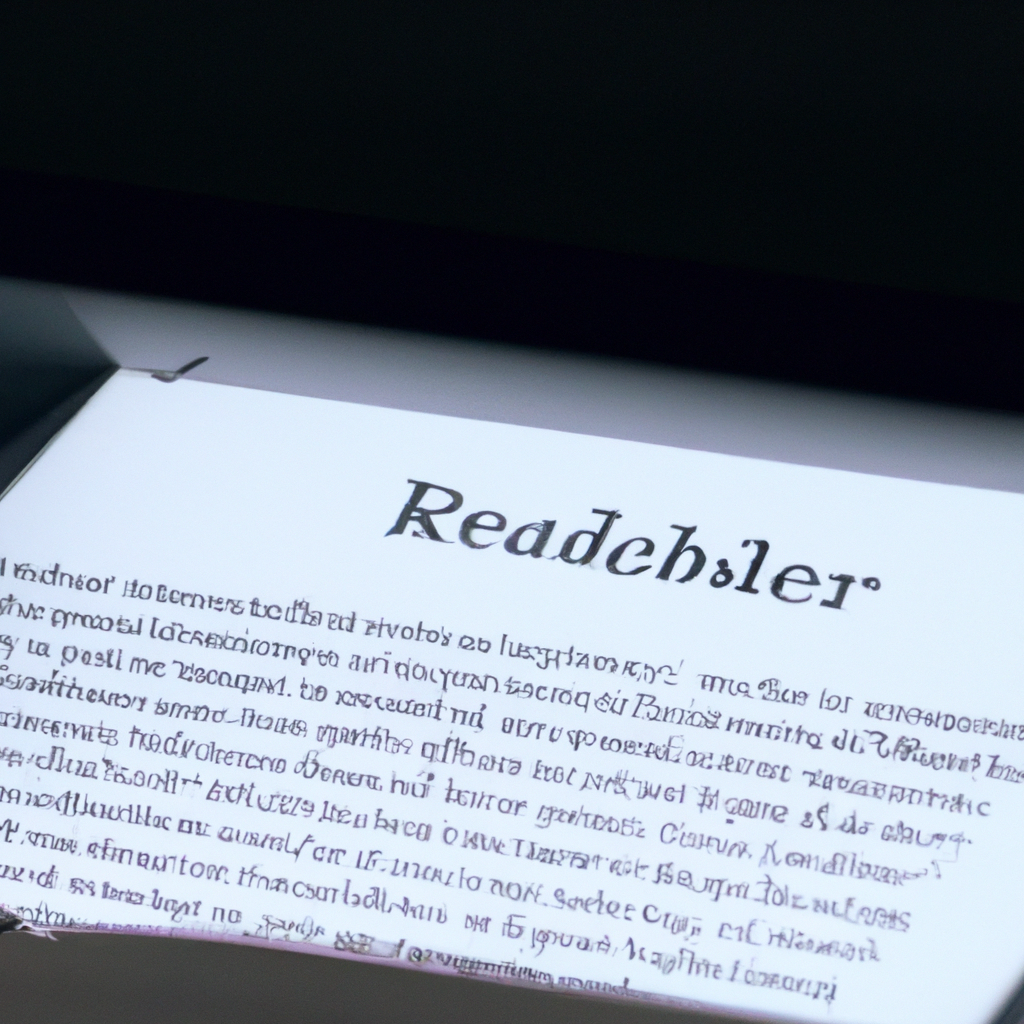E-readers have become a popular choice for book lovers who prefer a digital reading experience. They offer convenience, portability, and a wide selection of books in one device. But have you ever wondered how an e-reader displays text? In this article, we will explore the technology behind e-reader screens and how they work to provide an optimal reading experience.
Electronic Reader Technology
Before we delve into how an e-reader display works, it is essential to understand the technology behind these devices. E-readers use electronic paper, also known as e-paper, to display text. This technology mimics the appearance of ink on paper and is designed to be easy on the eyes, making it perfect for extended reading.
E-paper is made up of tiny microcapsules that contain charged particles. These capsules are suspended in a liquid and sandwiched between two layers of electrodes. When a voltage is applied to the electrodes, the charged particles move and cause the microcapsules to change color, creating a pixel on the screen.
E-reader Screen
The e-reader screen is the most critical component of the device. E-reader screens come in various sizes, from six inches to thirteen inches, and are typically made of plastic. The plastic material is used because it is more durable and flexible than glass, making it ideal for portable devices.
E-reader screens are also designed to be glare-free, making them ideal for outdoor reading. They do not emit light, and instead, reflect ambient light like regular paper, reducing eye strain. This feature makes e-readers an excellent choice for reading in any lighting condition, including direct sunlight.
Reading on E-Reader
Reading on an e-reader is a unique experience that is different from reading on a traditional paper book. E-readers allow for customization of font size, line spacing, and even font style, making it easier for readers with visual impairments. E-readers also have a built-in dictionary, which allows readers to look up unfamiliar words without leaving the page.
Another unique feature of e-readers is the ability to highlight text, take notes, and bookmark pages. These features make it easy to keep track of important information and reference it later. Additionally, e-readers have a search function that allows readers to search the entire book for specific keywords or phrases.
E-Book Reader Display
E-book reader displays are optimized for reading text, making them different from other types of screens. They are designed to display text in a way that is easy to read, with high contrast and sharp, clear letters. The use of e-paper technology also means that e-reader screens do not emit blue light, which can disrupt sleep and cause eye strain.
E-book reader displays also have a long battery life, with some devices capable of lasting for weeks on a single charge. This is because e-paper technology does not require a constant power source to maintain the image on the screen. Instead, the image remains on the screen until it is changed, reducing power consumption.
Conclusion
In conclusion, e-readers use electronic paper technology to display text, providing a unique reading experience that is different from traditional paper books. The e-reader screen is designed to be glare-free, easy on the eyes, and optimized for reading text. With the ability to customize font size, take notes, and search the entire book, e-readers offer a reading experience that is both convenient and enjoyable.







